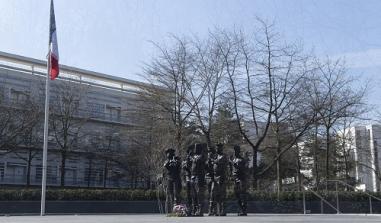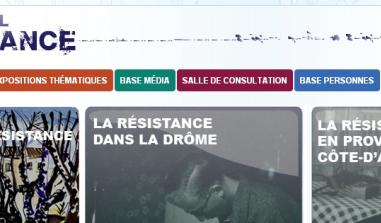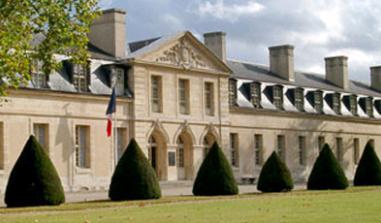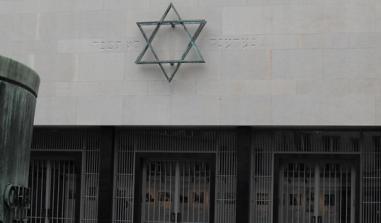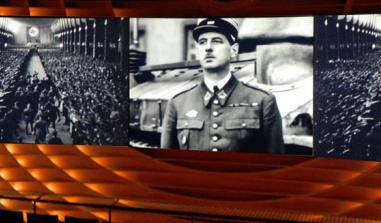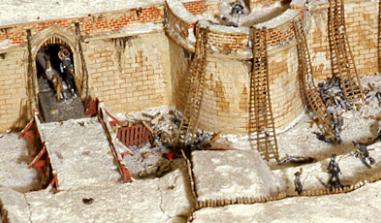National Memorial to the Algerian War and the Battles in Morocco and Tunisia
and the Battles in Morocco and Tunisia
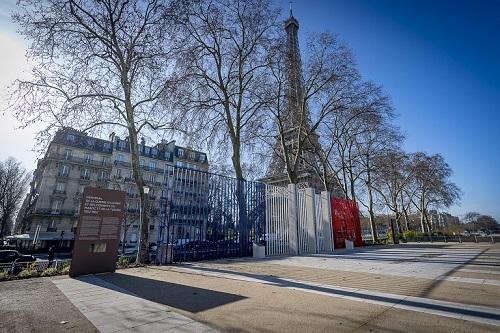
Mémorial national de la guerre d'Algérie et des combats du Maroc et de la Tunisie. Crédits photos : ©MINDEF/SGA/DMPA – J. Robert
In memory of the soldiers who died for France during the Algerian War
and the battles in Morocco and Tunisia, and of all the members of the auxiliary
troops killed after the ceasefire in Algeria, many of whom were never identified.
- Télécharger la plaquette -
ALGERIA
Algeria holds a distinct place in the 20th century history of the French Empire through its long-standing ties, its close proximity to mainland France and the considerable numbers of Europeans who moved there from 1830 onwards to live and work alongside the local population. The country’s role was intensified during the First World War, when it contributed to the French military effort, and above all during the Second World War, when Algiers became, in spring and summer of 1944, the capital of France Libre. Large numbers of French and Muslims from Algeria played a part in liberating the country. The official assimilation policy in place nevertheless seemed to contradict the political inequality that existed between both groups of the population. Similarly, Algerian nationalism gained ground and demanded that political autonomy and equal rights be recognised for Muslims. The uprising of May 1945, which was harshly suppressed, came as a prelude to the war for independence which broke out on All Saints’ Day 1954, principally in the Aures. In a context of global decolonisation, at a time when the neighbouring protectorates of Tunisia and Morocco were to achieve independence, the image of a prosperous and pacified French Algeria seemed false. The gap widened between the millions of Europeans, mostly city-dwellers attached to a land they considered both their own country and an extension of France, and the eight million Algerian Muslims. The majority of Algerian Muslims lived in rural areas and were threatened by impoverishment, poor access to schooling and inadequate public administration. The integration and social and economic modernisation policy introduced for Algeria in 1955 was an affront to both the European population who wished to maintain the status quo and the Algerian nationalists assembled within the FLN (the National Liberation Front). Far from being quelled, the conflict intensified and grew, the FLN demanding each member of the Algerian population to choose a side. Meanwhile, France stepped up its military action by sending a contingent to Algeria in 1955. The French army patrolled the country, carried out administration, conducted psychological operations, provided social aid and hunted out members of the ALN (National Liberation Army). However, no solution was in sight.
The Reform Act of February 1958 recognised the Algerian personality while affirming that Algeria was an integral part of the French Republic.
The weakness of the Fourth Republic, which was unsuccessful in bringing an end to the Algerian uprising, the fear of the Europeans in Algeria of seeing their country lost to the FLN and the army’s desire to not surrender explain the crisis of May 1958 and General de Gaulle's return to power. At the same time as relaunching a military campaign, General de Gaulle offered a “peace of the braves” (paix des braves) and implemented an extensive economic development programme: the Constantine Plan. Its effects were limited. The war continued despite the setbacks suffered by the ALN. The cause for Algerian independence won new supporters daily internationally and in French public opinion. The change of de Gaulle’s Algerian policy, from a position of self-determination (September 1959) to one of an ‘Algerian’ Algeria (November 1960), radicalised the opposition. This was demonstrated most decisively in Algiers during the barricades (January 1960) and the putsch of April 1961. Comforted by the results of the referendum of January 1961 which garnered the support of three-quarters of the citizens of mainland France, General de Gaulle entered into peace talks with the GPRA (the Provisional Government of the Algerian Republic), a series of long negotiations which concluded with the signing of the Evian Agreements on 18 March 1962. The proclamation of a ceasefire from 19 March did not bring an end to the violence, of which the harkis, killed in their thousands, were the principal victims. In amidst this chaotic situation, France recognised Algeria’s independence on 3 July 1962, which then led to the return of the Europeans to their home countries and the end of the French presence in Algeria which had lasted for over 130 years on the other side of the Mediterranean.
MOROCCO
In Morocco, a French protectorate since 1912, the 1940 defeat struck a harsh blow to French prestige, even though the recruitment of Moroccan units to the French service did not stop at that time. Nationalism gained support encouraged by the Istiqlal (Independence Party) and Sultan Mohammed V ben Youssef, who became the symbol of the call for independence. In 1952, anti-French demonstrations cropped up more and more. From that moment, a show of force became inevitable: distrustful of the progressive forces, the French government replaced the Sultan on 20 August 1953, a political action that did not stop nationalist terrorism taking place and even caused violent clashes amongst the European working classes.
After an imposed exile in Corsica followed by Madagascar (1953-1955), Mohamed V triumphantly returned to obtain the independence of Morocco from France, achieved on 2 March 1956.
TUNISIA
Made a French protectorate by the Treaty of Bardo (1881), Tunisia was, during the course of the Second World War, a stage for confrontations between the Axis army troops and the Allies (1942-1943), while the Tunisian regiments earned recognition in Italy and in France in 1943-1944. Tunisian nationalism, led by the Neo Destour Party under Habib Bourguiba, gave rise to acts of terrorism and a start of guerrilla warfare from 1952 onwards. For two years, the French army had to fight against an armed movement which committed several attacks in Tunis and other cities around the country.
After the agreements signed in June 1955 but which collapsed even before they were put into action, the protocol of 20 March 1956 abolished the Treaty of Bardo and recognised total independence for the Kingdom of Tunis.
The Republic of Tunisia was declared one year later and Bourguiba was appointed the republic’s first president.
EXCERPT FROM THE ARTIST’S NOTE OF INTENTION (Gérard COLLIN-THIÉBAUT)
Monuments to the dead are links to a past memory and, a century later, their forms have become part of our collective memory: testaments to history, they stand silent in every town, erected in homage to those who sacrificed their life to make sense of death and keep remembrance alive. They often reach up to the sky, whatever their shape, and are engraved with lists of names. When looking at a monument, our eyes are drawn from bottom to top, yet we read the names from top to bottom. For this project, I wanted to respond to this instinct for identification, keeping our eyes drawn from bottom to top, using columns, but also to offer a modern way of reading, by catching the attention of a patchwork public made up of pedestrians, regular passers-by, tourists and so on. Through this project I wanted it to be there for the people concerned, but also to grab any passer-by, caught up in their everyday thoughts, and to arouse an emotion, through a kind of freeze-frame, reminding them of the sacrifice these young people made in the name of patriotism; and to do this, you have to use the resources adapted to your time.?Together all of this will make it a memorial worthy of the third millennium.
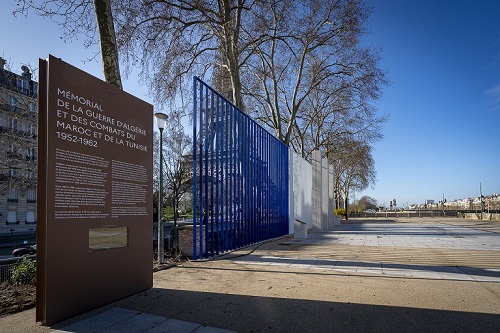
©MINDEF/SGA/DMPA J. Robert
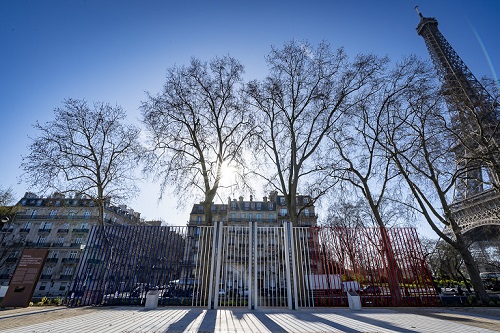
©MINDEF/SGA/DMPA J. Robert
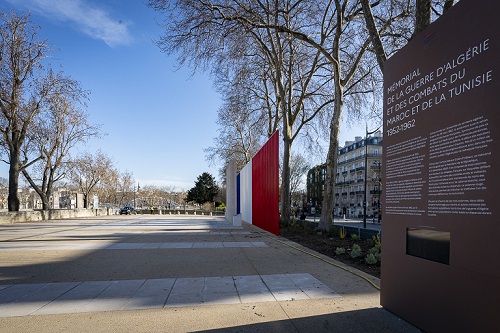
©MINDEF/SGA/DMPA J. Robert
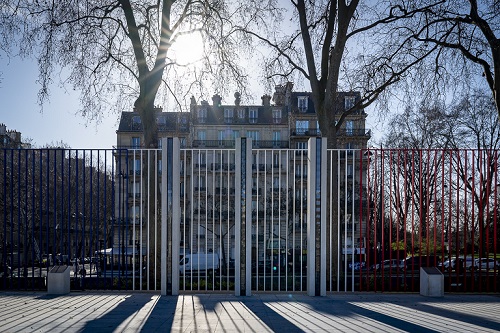
©MINDEF/SGA/DMPA J. Robert
Practical information
Quai Branly 75007
Paris


